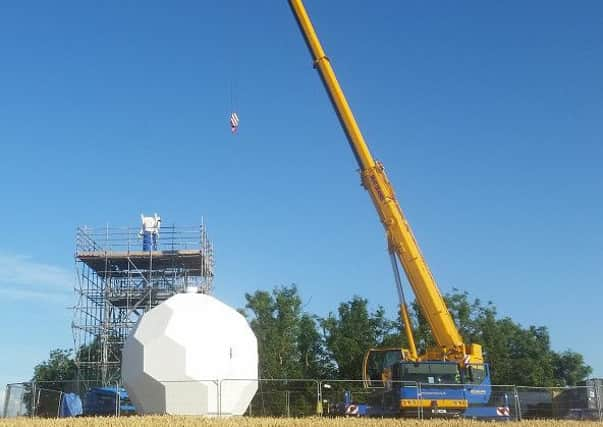Powerful weather radar goes live in Sunderland


The device, which has been lifted into place in High Moorsley, is so sensitive it can capture the size and shape of raindrops.
It captures accurate, live pictures of precipitation and the data is used to update weather models and so improve forecast accuracy.
Advertisement
Hide AdAdvertisement
Hide AdThe work is part of a major upgrade of the Met Office radar network for meteorology, providing more accurate, detailed data essential for successful UK forecast and crucial for issuing warnings of heavy rainfall events.
Richard Bennett, Senior Project Manager said; “Scientific advances mean we can now capture the size and shape of raindrops as well as their composition (ice, water, snow), which will lead to improvements in accuracy of rainfall measurements, particularly during high impact weather events.
“The new radar network has also begun to capture wind speed measurements.”
The changes will help ensure the Met Office continues to play a vital role in providing governments, commercial customers and the public with timely and essential weather forecast and real time weather information.
Advertisement
Hide AdAdvertisement
Hide AdWeather radar gives an accurate live picture of precipitation (rain, hail, snow) present in the atmosphere and many may be familiar with them from TV weather bulletins.
Behind the scenes, radar data is used to continuously update numerical weather models and thus improve forecast accuracy.
The High Moorsley radar is the oldest in the North East and part of the Met Office’s 30-year-old Radar Network, one of the longest established radar networks of its kind in the world.
There are 16 radars in the network and the High Moorsley site was first opened in July 2009.
Advertisement
Hide AdAdvertisement
Hide AdThis upgrade to ‘dual-polarisation’ capability is part of a partnership between the Public Weather Service and the Environment Agency and it was developed in-house by Met Office engineers.
The radar combines world-leading hardware with unparalleled levels of skill and expertise and equipment was, wherever possible, sourced locally.